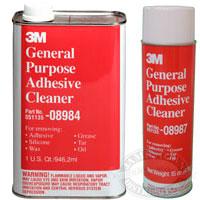My new-to-me 1986 Hershine 37 came with a metallic sort of 'wallpaper' on some walls in the galley. The rest of the walls in wet areas are an off-white material, not sure what it is.
When I pulled off the 'wallpaper,' much of it came right off with no problem. Some parts, however, delaminated, leaving behind a sheet of what looks and feels like Mylar... like one molecule kind of thin. There was also a fairly strong solvent smell for some time after removing the sheets, and the surface left behind is still a bit sticky.
I tried Goof-off on a small area, and it didn't remove the stickiness. I wiped it off quickly, in case it was in fact dissolving the surface.
Has anyone encountered anything like this before? Any clue as to what this is and how I get the kitchen walls to the nice 'eggshell' feel that the rest of this material has?
Thanks-
aenlic
When I pulled off the 'wallpaper,' much of it came right off with no problem. Some parts, however, delaminated, leaving behind a sheet of what looks and feels like Mylar... like one molecule kind of thin. There was also a fairly strong solvent smell for some time after removing the sheets, and the surface left behind is still a bit sticky.
I tried Goof-off on a small area, and it didn't remove the stickiness. I wiped it off quickly, in case it was in fact dissolving the surface.
Has anyone encountered anything like this before? Any clue as to what this is and how I get the kitchen walls to the nice 'eggshell' feel that the rest of this material has?
Thanks-
aenlic

